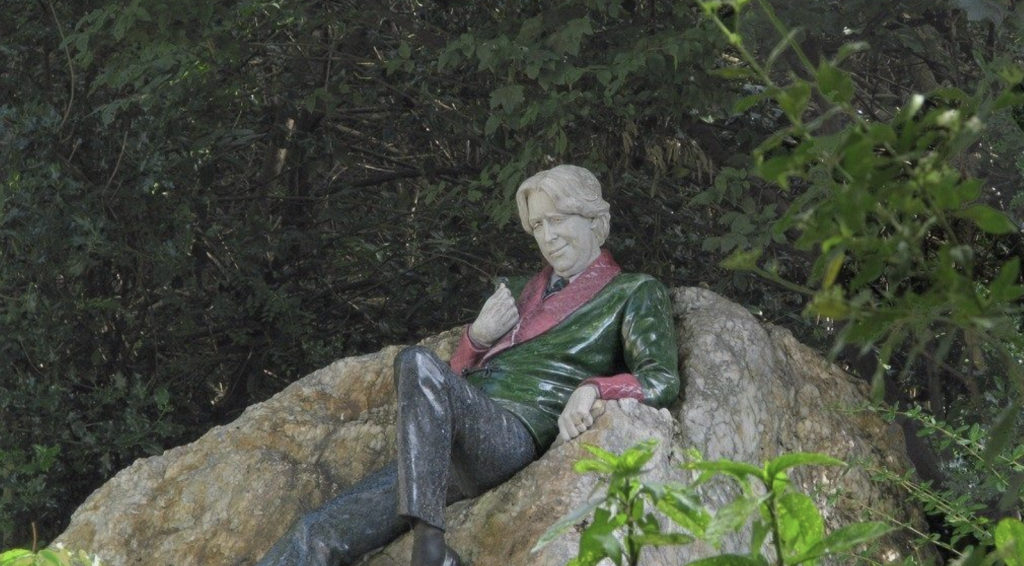As I read through the chapters in Kilfeather, I could not help but notice the juxtaposition of the two emotions: humor and devastation. Amongst the struggles of finding order and sovereignty, moments such as the empassioned riots in theaters and the duels between two former friends stood out and from our current point of view seemed quite comedic. However, soon after, the tragic deaths and the rise of poverty and devastation shadow the streaks of humor that I thought I was able to catch. These descriptions of the increasing chaos, uncertainty, as well as the actions of the Volunteers painted a distinct picture of revolution in my mind.
When I came across the home of Oscar Wilde and his statue in Merrion Square Park, his facial expression of both “comedy and tragedy” immediately sparked a connection to the readings. The statue portrays his “dual nature” which is evident from his history and his writings. I see his statue almost as a parallel to the Irish history, reflecting both somberness and intensity, as well as some lightheartedness and pleasure.

I really enjoyed exploring Wilde’s home and his statue. The details of his statue, with the bright flashy colors and his rings, and his carefree posture gives a sense that he is looking peacefully and hopefully outwards into his home and city. The statues of Dionysus and Wilde’s wife next to him seem to represent two important values in his life- one of his love for writing and theater and the other for family. He seems to guard the city and its history, one that he is deeply entangled in.

This is really great insight! I didn’t think about the connection between tragedy and comedy when I was reading, but it completely makes sense. That contrast makes me think about how conflicted both Wilde and Irish history seem to be, like this constant push and pull between peacefulness and struggle. Perhaps, even aside from his abilities as a writer, this could be a reason that he is such a classic example of an Irish writer?